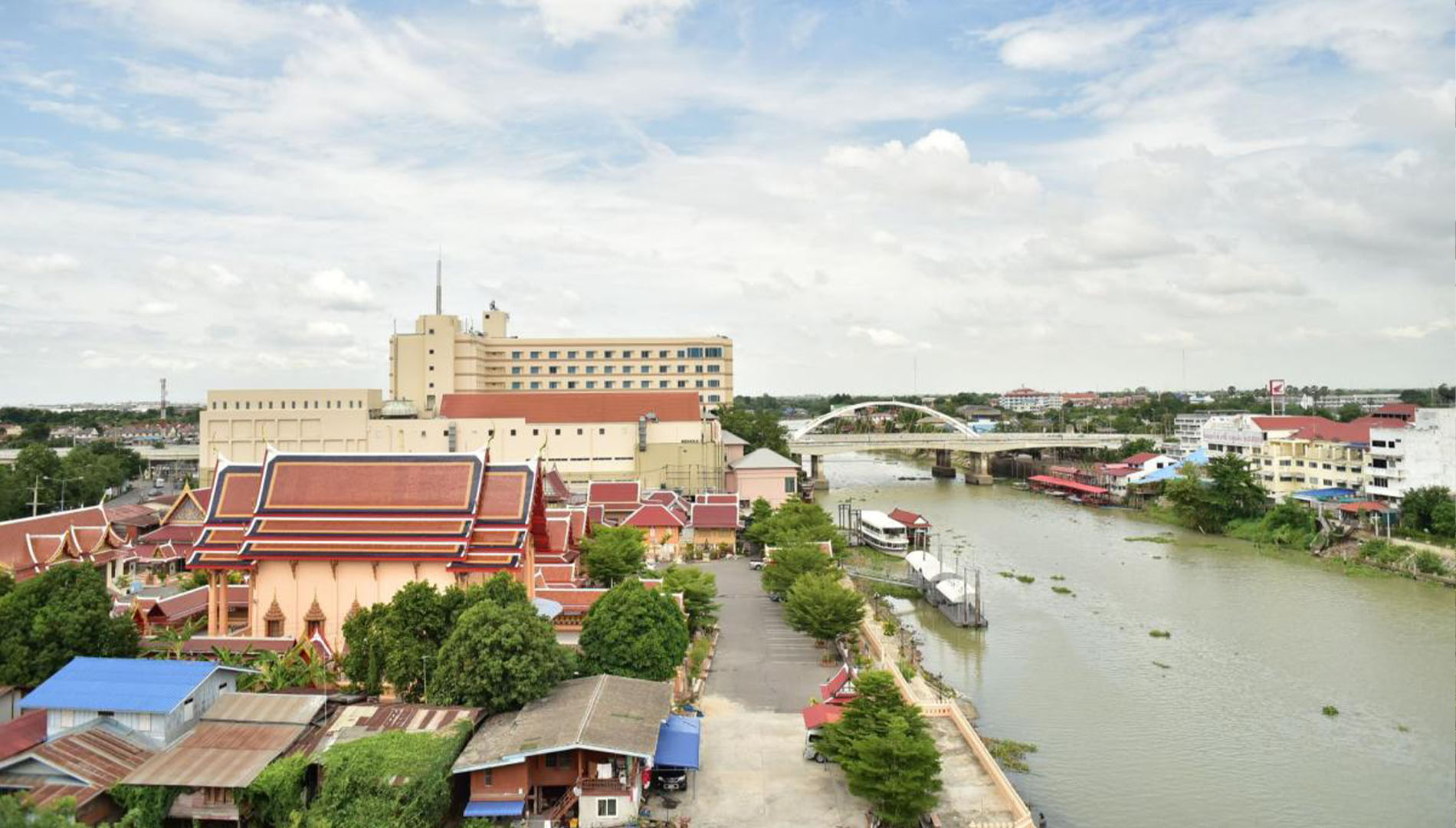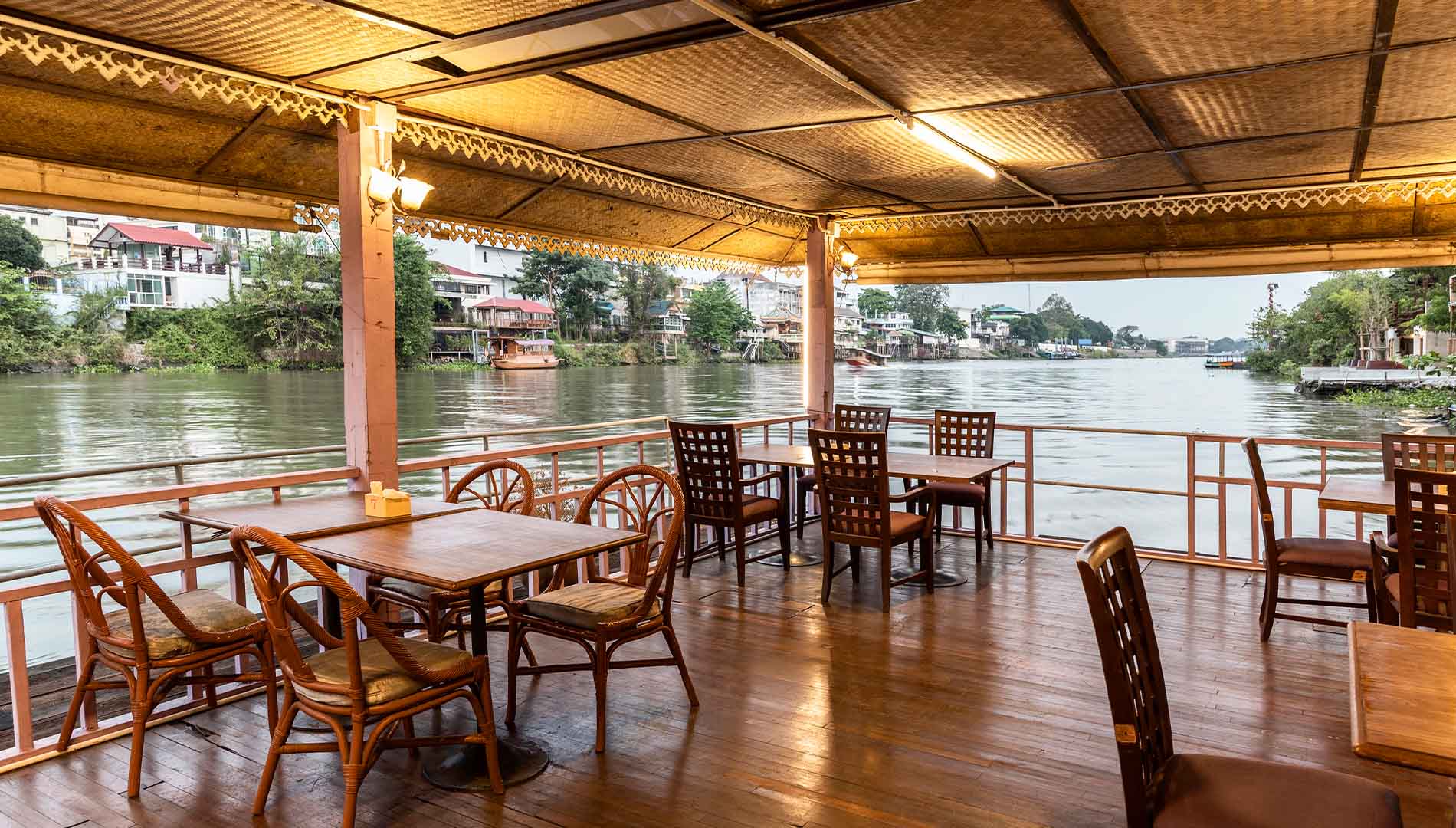The ancient city of Ayutthaya, formally designated Phra Nakhon Si Ayutthaya was the Thai capital city for 417 years ago, and is one of Thailand's major tourist attractions. Ayutthaya province is relatively small at 2,557 sq.km. and is easily accessible due to good road, rail and river connections and its proximity to Bangkok, Stradding the Chao Phraya River, the nation's principal waterway, the province is extremely important, as it was the Siamese capital for four centuries. The city of Ayutthaya is 76 km. north of Bangkok and boasts numerous magnificent ruins from its days as the capital. Just to the south, in perfect condition, stands the royal palace of Bang Pa-In set in splendid gardens. The province is also noted for H.M. the Queen's Bang Sai Arts and Crafts Centre. Many ancient ruins and art works can be seen in a city that was founded in 1350 by King U-Thong when the Thais were forced southwards by northern neighbours. During the period when Ayutthaya was capital, 33 kings and several dynasties ruled the kingdom, until the glittering city was sacked by the Burmese in 1767, ruined and abandoned. The extensive ruins and the historical records demonstrate that Ayutthaya was one of Southeast Asia's most prosperous cities. In recognition of its historical and cultural importance, Phra Nakhon Si Ayutthaya Historical Park, the location of the ruins adjacent to today's city, was declared a UNESCO'S World Heritage site in 1991
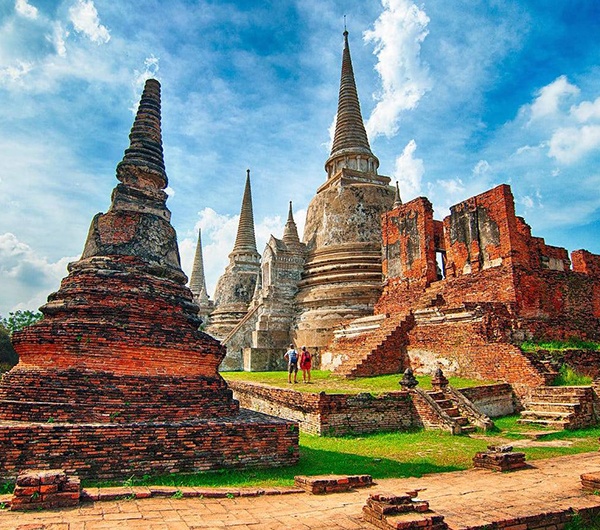
WAT PHRA SI SANPHET
This important and outstanding monastery is located in the grand palace compound, like Wat Phra Si Rattanasatsadaram (Wat Phra Kaeo) of Bangkok. It was used as a residential palace in the reign of King Ramathibodi I. When King Borom Trai Lokkanat commanded that new living quarters be built, this residential palace was dedicated as the royal chapel without monks and novice inhabitants. It is open everyday from 08.00-18.00 hrs. Admission is 30 baht.
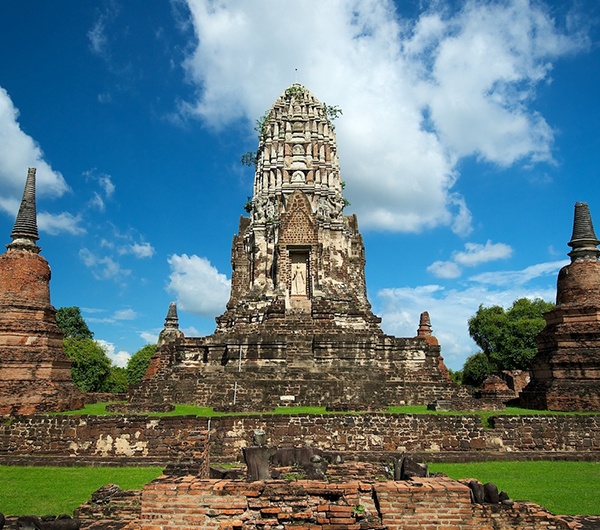
WAT PHRA RAM
This monastery was situated outside the grand palace compound to the southeast. It was constructed by the royal command of King Ramesuan on ground where the royal cremation ceremony for his father, King Uthong, took place, A big lagoon in front of this monastery was originally named "Nong Sano" latterly "Bung Phra Ram", and currently "Phra Ram Public Pak" Wat Phra Ram is open everyday from 08.00-18.00 hrs. Admission is 30 baht.
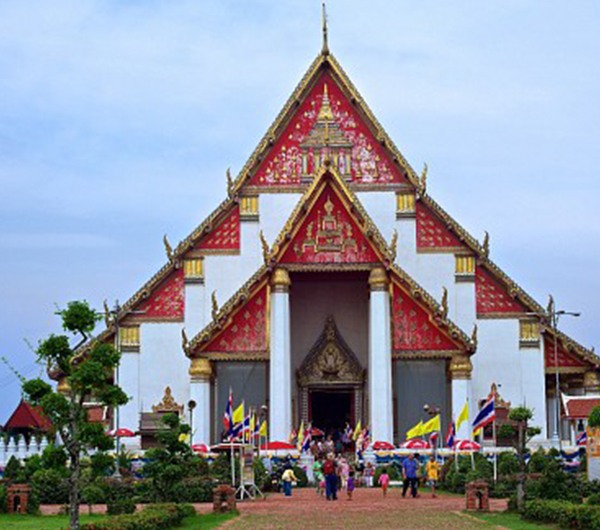
WIHAN PHRA MONGKHON BOPHIT
Phra Mongkhon Bophit, a large bronze cast Buddha image, was originally enshrined outside the grand palace to the east. King Songtham commanded it to be transferred to the west where it is currently enshrined and covered with a Mondop. During the 2nd fall of Ayutthaya, the building and the image were badly destroyed by fire. The one currently seen is a reconstruction. The open area northeast of the Sanctuary (Wihan) was where the royal cremation ceremony took place (this practice is now held at Sanam Luang, the Phra Men Ground of Bangkok).

WAT RATCHABURANA
This monastery was located near P Chan Bridge opposite Wat Maha That. King Borom Rachathirat II (Chao Sam Phraya) Commanded that two pagodas be built on the ground where Chao Ai and Chao Yi engaged n single-handed combat on elephant back, md both were killed. Later, he established Wihan combined with the Prang nearby ind upgraded it to a monastery. Wat Ratchaburana is open everyday from) 8.00-18.00 hrs. Admission is 30 baht.
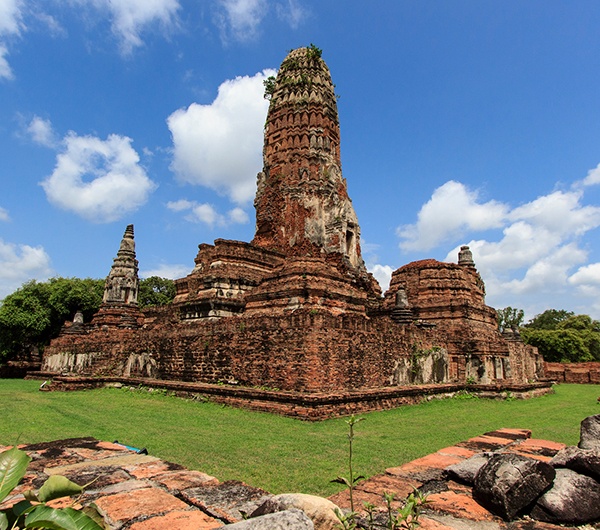
WAT MAHA THAT
This temple is located in front of the grand palace to the east near Pa Than Bridge. It was constructed in the reign of King Borom Rachathirat I. It houses the holy relics of Lord Buddha. Wat Mahathat is open everyday from 08.00-18.00 hrs. Admission is 30 baht.

WAT PHUTTHAISAWAN
This monastery is located on the riverbank opposite the city island to the south. Constructed in the area where King Uthong and his subject first migrated for the establishment of a new city of Ayutthaya, it was formerly called "Wiang Lek".
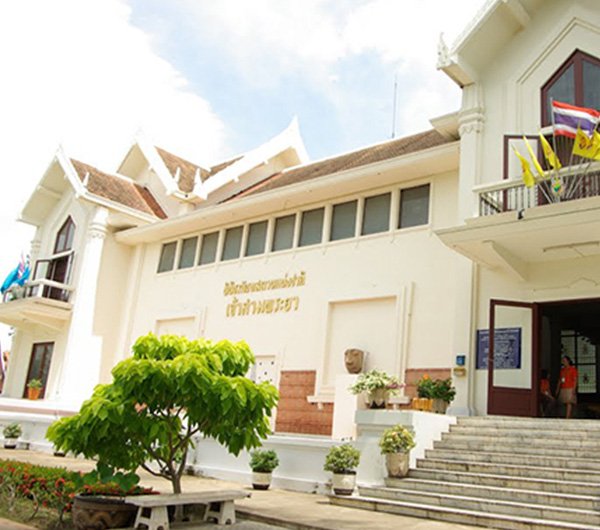
CHAO SAM PHRAYA NATIONAL MUSEUM
The museum is located Dn Rochana Road, opposite the Tourism Authority of Thailand Dffice. It exhibits various antiques, Buddha images and famous carved panels. A receptacle in the Mondop contains the relics of Lord Buddha and objects of art more than 500 years old. The museum also has a substantial collection of local artifacts. It is open everyday except Mondays, Tuesday from 09.00-16.00 hrs. Admission is 30 baht.
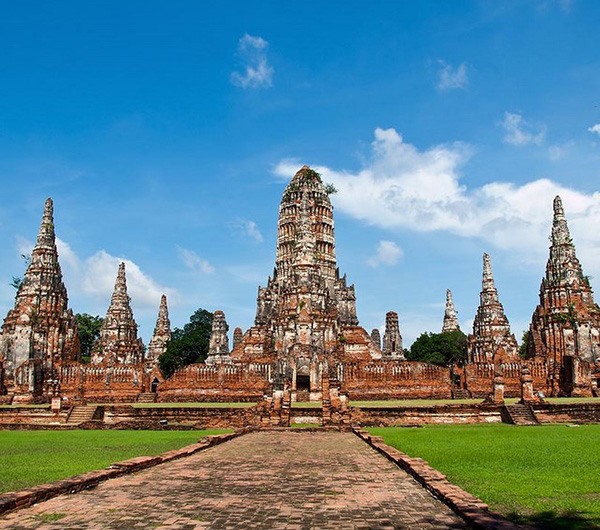
WAT CHAIWATTHANARAM
This is another monastery located on the same riverbank as Wat Phutthaisawan but to the west of the city island. It was built by the royal command of King Prasat Thong. The existing main Prang and pagodas around the corners are still in good shape. Wat Caiwatthanaram is open everyday from 08.00-18.00 hrs. Admission is 30 baht.
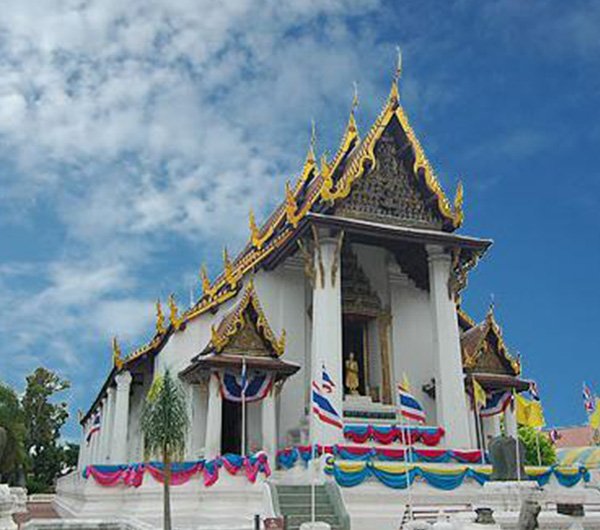
WAT NA PHRA MEN
The former name of this monastery was Wat Phra Merurachikaram. It is located on the bank of Khong Subua opposite the grand palace. The Ubosot design is of early Ayutthaya style. The most interesting objects are the principal Buddha image, fully decorate in regal attire, and another ancient Buddha image made of stone in the small Wihan. It is open everyday from 08.00-17.00 hrs. Admission is 20 baht.

AYUTTHAYA HISTORICAL STUDY CENTER
Located on Rochana Road, this center is a national research institute devoted to the study of Ayutthaya, especially during the period when Ayutthaya was the capital of Thailand. The Center is responsible for the museum of the history of Ayutthaya which exhibits reconstructions from Ayutthaya's past. The Center also supports an information service and a library containing historical materials about Ayutthaya. Open everyday from 09.00-16.30 hrs. For more details please contact tel. (035) 245123-4, admission is 100baht.

WAT YAI CHAIMONGKHON
This monastery, constructed . urmg the reign of King Uthong, is lo- ated outside the city to the utheast in the same direction as the railway station. One can see its large pagoda from far away. King Naresuan e Great commanded that the pagoda built to celebrate the victory of his mbat on elephant back, He also tended a huge construction to match the large pagoda of Wat Phukhao Thong, and named it "Phra Chedi Chaimongkhon" It is open everyday from 08.00-18.00 hrs. Admission is 20 baht.

ELEPHANT KRAAL PAVILION
The pavilion, utilized as the royal seat to witness the elephant roundup, is located in Tambon Suan Phrik, Amphoe Phra Nakhon Si. Ayutthaya. Its appearance is that of a big cage surrounded by logs having, from the front center, fencing lines of 45 degrees spread out to both sides far away into the jungle area. Around the kraal itself is an easthern wall with bricks to the height of the top of the logs. Behind the kraal and opposite the front fencing line is the pavilion housing the royal seat. The kraal currently seen was renovated in 1988 by the government.
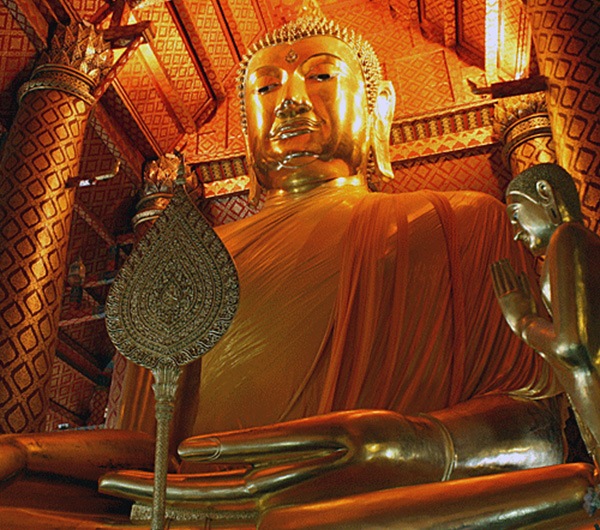
WAT PHANAN CHOENG
Overlooking the river on the opposite bank from the main city, Wat Phanan Choeng was founded shortly before the establishment of Ayutthaya as the Kingdoms capital. Its main building enshrines a huge, seated Buddha image, that is 57 feet tall an object of particular devotion to Thais of Chinese origin. This principal image called Phrachao Phananchoeng was built of stucco in the attitude of subduing evil in 1325. The temple is a popular stopover for riverboat cruises along the Maenam Chao Phraya. This temple can be reached by boat from the fortress ruins.
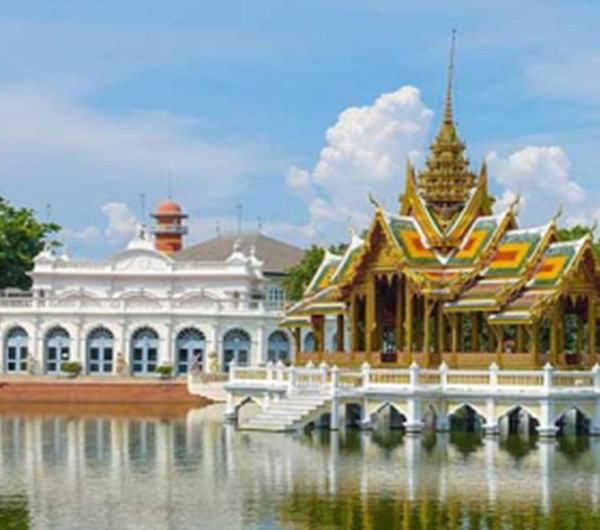
BANG PA-IN SUMMER PALACE
Bang Pa-In is one of Ayutthaya's districts. It lies 58 kilometers north of Bangkok by rail, 61 kilometers by road. Bang Pa-In is famous for its royal palace which attracts many tourists. Originally, there was a riverine island. When King Prasat Thong became the Ayutthaya's king (1630-1655), he had the chumphon Nikayaram Temple built on his family estate. Later, he had a palace built in the middle of the island where he could periodically reside. The palace, surrrounded by a lake 400 meters long and 40 meters wide, and the Chumphon Nikayaram Temple are all that remain of King Prasat Thong's construction work at Bang Pa-In Palace was used as country residene by every Ayutthaya monarch after King Prasat Thong. But when the new capital was extablished in Bangkok, Bang Pa-In Palace Was deserted for 80 years. It was only during King Rama IV's reign (1851-1868) that Bang Pa-In Palace was again visited by kings. King Rama IV stayed there and had a house built in the old palace compound. His son, King Rama V (1868-1910) liked the place, stayed there every year and constructed the royal palace as it is seen. Bang Pa-In Island is located 40 kilometers from the city island of Ayutthaya. To access Bang Pa-In from Ayutthaya, one can go by Phahonyothin Road and make a right turn at km. 35 for 7 kilometers to the Bang Pa-In Palace.
It is open everyday between 08.00-16.00 hrs. Admission is 100 baht. For more details, please contact tel. (035) 261044,261935
